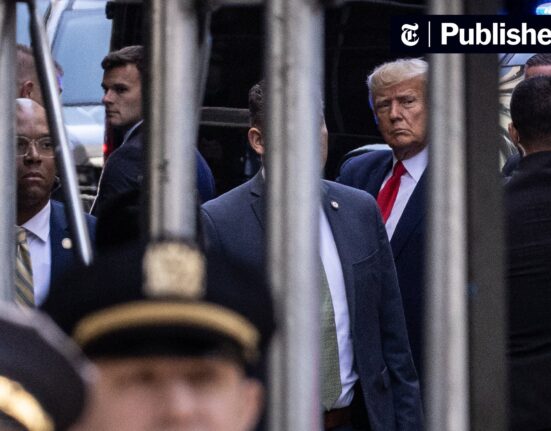A man from Colombia stands at a floating buoy barrier as he looks to cross the Rio Grande from Mexico into the U.S., Monday, August 21, 2023, in Eagle Pass, Texas. (AP Photo/Eric Gay)
In the heart of Eagle Pass, Texas, a contentious battle is unfolding over a unique solution that has sparked heated debates on both sides of the US-Mexico border. At stake is not just physical safety but also diplomatic relations and the future of migration policies in these tumultuous times.
The latest twist in this saga came when a federal appeals court made a crucial decision regarding Texas’ floating barrier on the Rio Grande. This innovative yet controversial measure has been under intense scrutiny due to its perceived impact on migrants and its implications for bilateral affairs.
“The order by the 5th U.S. Circuit Court of Appeals puts on hold a ruling that would have required Texas to move the wrecking-ball sized buoys on the river by next week.”
Initially designed as part of Governor Greg Abbott’s strategy to deter unauthorized crossings into the United States, these floating buoys have become symbolic of broader tensions surrounding immigration enforcement and humanitarian concerns.
While some view them as essential tools for border security and control, others see them as menacing obstacles that endanger vulnerable individuals seeking refuge or economic opportunities across international boundaries.
“The stay granted by the New Orleans-based appeals court lets the barrier remain in the water while the legal challenge continues.”
The recent legal developments have injected further uncertainty into an already complex situation. With conflicting perspectives from various stakeholders – including state authorities, federal agencies, advocacy groups, and neighboring governments – finding common ground appears increasingly elusive.
At its core, this dispute reflects deeper questions about sovereignty, human rights, and regional cooperation in addressing migration flows within a context marked by shifting political landscapes and evolving global challenges.
“On Wednesday, U.S District Judge David Ezra of Austin ordered Texas to move the roughly 1,000-foot (305-meter) barrier out of the middle of The Rio Grande.”
As courtroom battles play out and public opinions diverge sharply on social media platforms and news outlets worldwide, one cannot overlook the real-world consequences felt by those directly impacted by these policies – migrants themselves whose destinies are intertwined with geopolitical decisions beyond their control.
Amidst all this legal wrangling and policy debates lies a fundamental tension between national interests and shared humanity. How societies navigate this delicate balance will shape not just border dynamics but also broader narratives around identity, compassion ,and belonging.









Leave feedback about this